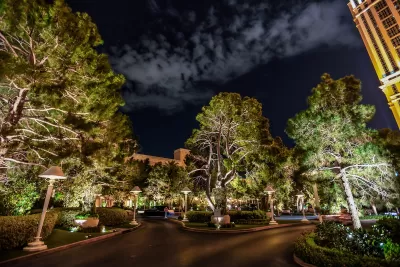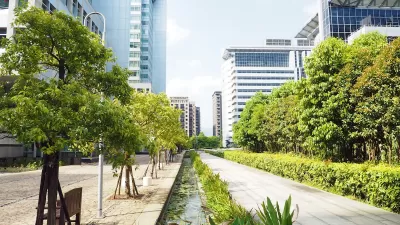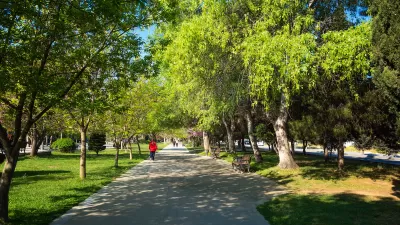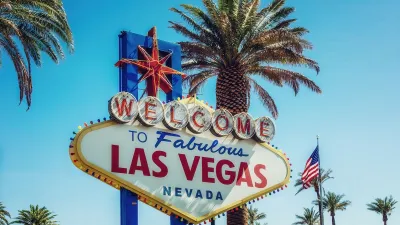The cooling effect of robust urban tree canopies is more pronounced in hotter, drier cities like Phoenix and Las Vegas.

New research from the U.S. Geological Survey shows that tree canopies in hot, dry cities have a bigger impact on local air temperature than those in cooler areas.
“The multi-year study was conducted in Baltimore, Los Angeles, Phoenix, Portland, Miami, Tucson, Denver and Las Vegas. Scientists placed 80-100 sensors on trees in each city and measured hourly air temperatures for three months during the summers of 2016-2019.” The researchers found a stronger cooling effect in the hotter and drier regions, where the trees served to counteract the heating effect of buildings.
The study also notes that “Trees reduce heat in all studied cities, but their effectiveness was contingent on local water availability. Irrigation is crucial for maintaining trees’ cooling effects in all studied areas.” Surfaces such as grass (which helps with cooling) and pavement (which increases heating) showed more consistent impacts across cities.
FULL STORY: Trees in cities are beyond shady

Alabama: Trump Terminates Settlements for Black Communities Harmed By Raw Sewage
Trump deemed the landmark civil rights agreement “illegal DEI and environmental justice policy.”

Study: Maui’s Plan to Convert Vacation Rentals to Long-Term Housing Could Cause Nearly $1 Billion Economic Loss
The plan would reduce visitor accommodation by 25% resulting in 1,900 jobs lost.

Why Should We Subsidize Public Transportation?
Many public transit agencies face financial stress due to rising costs, declining fare revenue, and declining subsidies. Transit advocates must provide a strong business case for increasing public transit funding.

Paris Bike Boom Leads to Steep Drop in Air Pollution
The French city’s air quality has improved dramatically in the past 20 years, coinciding with a growth in cycling.

Why Housing Costs More to Build in California Than in Texas
Hard costs like labor and materials combined with ‘soft’ costs such as permitting make building in the San Francisco Bay Area almost three times as costly as in Texas cities.

San Diego County Sees a Rise in Urban Coyotes
San Diego County experiences a rise in urban coyotes, as sightings become prevalent throughout its urban neighbourhoods and surrounding areas.
Urban Design for Planners 1: Software Tools
This six-course series explores essential urban design concepts using open source software and equips planners with the tools they need to participate fully in the urban design process.
Planning for Universal Design
Learn the tools for implementing Universal Design in planning regulations.
Smith Gee Studio
Alamo Area Metropolitan Planning Organization
City of Santa Clarita
Institute for Housing and Urban Development Studies (IHS)
City of Grandview
Harvard GSD Executive Education
Toledo-Lucas County Plan Commissions
Salt Lake City
NYU Wagner Graduate School of Public Service





























